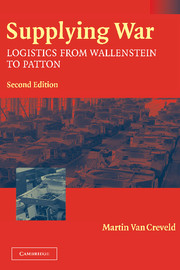Book contents
- Frontmatter
- Dedication
- Contents
- Maps
- Preface
- Introduction
- 1 The background of two centuries
- 2 'An army marches on its stomach!'
- 3 When demigods rode rails
- 4 The wheel that broke
- 5 Russian roulette
- 6 Sirte to Alamein
- 7 War of the accountants
- 8 Logistics in perspective
- Postscript: Where are we now?
- Note on sources
- Bibliography
- Notes
- Index
4 - The wheel that broke
Published online by Cambridge University Press: 22 June 2023
- Frontmatter
- Dedication
- Contents
- Maps
- Preface
- Introduction
- 1 The background of two centuries
- 2 'An army marches on its stomach!'
- 3 When demigods rode rails
- 4 The wheel that broke
- 5 Russian roulette
- 6 Sirte to Alamein
- 7 War of the accountants
- 8 Logistics in perspective
- Postscript: Where are we now?
- Note on sources
- Bibliography
- Notes
- Index
Summary
State of the art
For Europe as a whole, the period between 1871 and 1914 was one of very rapid demographic and economic expansion. In just forty-four years, population grew by almost seventy per cent, from 293 to 490 millions. During the same period, industry, trade and transportation developed by leaps and bounds until, on the eve of World War I, they had totally transformed the face of the continent. In 1870, the combined production of coal and lignite by the three leading industrial countries - Britain, France, and Germany - amounted to just under 160 million tons a year; by 1913, it had more than trebled to reach 612 million tons. Similarly, in 1870, the production of pig iron in the same three countries was around 7.5 million tons a year, whereas by 1913 it had grown to 29 million tons, an increase of almost 300 per cent. This expansion, needless to say, was accompanied by vast changes in the pattern of occupation and residence. If the industrial revolution may be said to have begun a hundred years before 1870, it was nevertheless the Franco-Prussian War that truly ushered in the age of coal and steel.
As factory chimneys grew ever taller, so did the size of the military instruments maintained by the major continental powers. In fact, the expansion of European armies and navies during the period under review, particularly in its second half, was even more rapid than that of population and industry. Social progress, increasing administrative efficiency, and, above all, the now almost universally adopted principle of conscription, made it possible to raise huge forces which, in relation to the size of the politico-economic systems supporting them, were far larger than anything previously recorded in history. For example, in France, the second-largest military power, the pool of trained military manpower available in 1870 amounted to not quite 500,000 men in a population of thirty-seven millions (a ratio of about 74 to 1). In 1914, however, this total had grown to more than four millions, despite an increase in population of less than 10 per cent.
- Type
- Chapter
- Information
- Supplying WarLogistics from Wallenstein to Patton, pp. 109 - 141Publisher: Cambridge University PressPrint publication year: 2004



